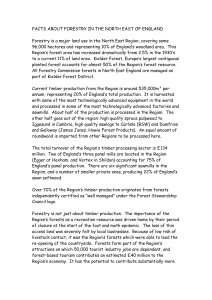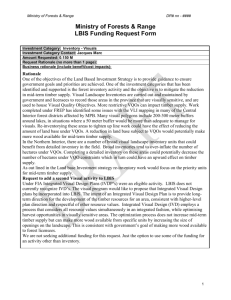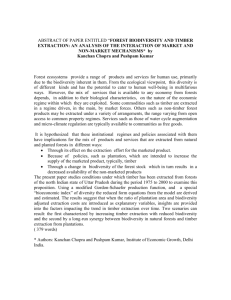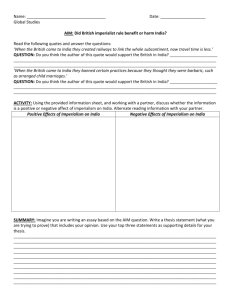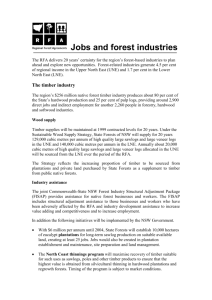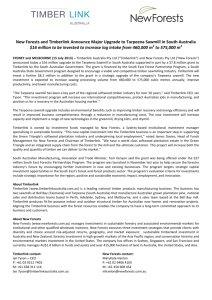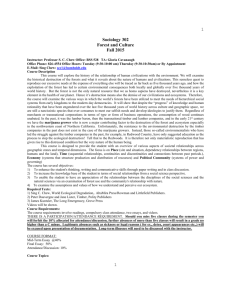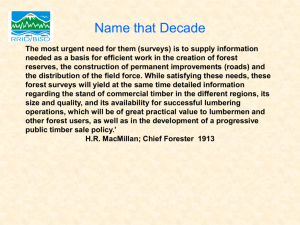Why do mapping along with inventory
advertisement
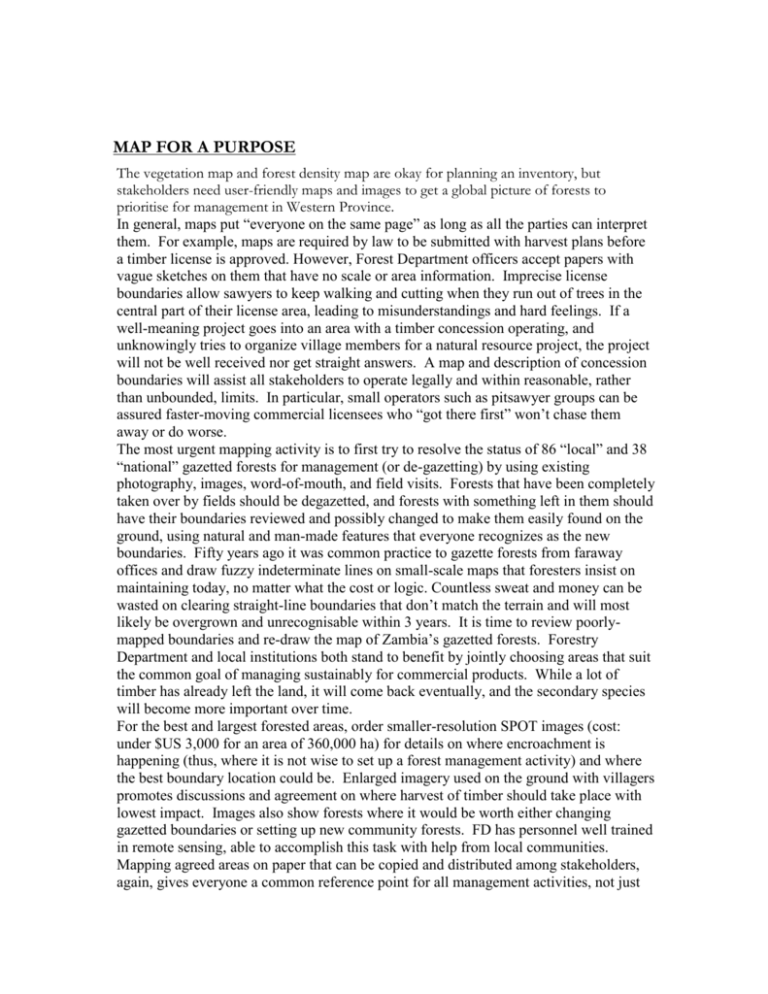
MAP FOR A PURPOSE The vegetation map and forest density map are okay for planning an inventory, but stakeholders need user-friendly maps and images to get a global picture of forests to prioritise for management in Western Province. In general, maps put “everyone on the same page” as long as all the parties can interpret them. For example, maps are required by law to be submitted with harvest plans before a timber license is approved. However, Forest Department officers accept papers with vague sketches on them that have no scale or area information. Imprecise license boundaries allow sawyers to keep walking and cutting when they run out of trees in the central part of their license area, leading to misunderstandings and hard feelings. If a well-meaning project goes into an area with a timber concession operating, and unknowingly tries to organize village members for a natural resource project, the project will not be well received nor get straight answers. A map and description of concession boundaries will assist all stakeholders to operate legally and within reasonable, rather than unbounded, limits. In particular, small operators such as pitsawyer groups can be assured faster-moving commercial licensees who “got there first” won’t chase them away or do worse. The most urgent mapping activity is to first try to resolve the status of 86 “local” and 38 “national” gazetted forests for management (or de-gazetting) by using existing photography, images, word-of-mouth, and field visits. Forests that have been completely taken over by fields should be degazetted, and forests with something left in them should have their boundaries reviewed and possibly changed to make them easily found on the ground, using natural and man-made features that everyone recognizes as the new boundaries. Fifty years ago it was common practice to gazette forests from faraway offices and draw fuzzy indeterminate lines on small-scale maps that foresters insist on maintaining today, no matter what the cost or logic. Countless sweat and money can be wasted on clearing straight-line boundaries that don’t match the terrain and will most likely be overgrown and unrecognisable within 3 years. It is time to review poorlymapped boundaries and re-draw the map of Zambia’s gazetted forests. Forestry Department and local institutions both stand to benefit by jointly choosing areas that suit the common goal of managing sustainably for commercial products. While a lot of timber has already left the land, it will come back eventually, and the secondary species will become more important over time. For the best and largest forested areas, order smaller-resolution SPOT images (cost: under $US 3,000 for an area of 360,000 ha) for details on where encroachment is happening (thus, where it is not wise to set up a forest management activity) and where the best boundary location could be. Enlarged imagery used on the ground with villagers promotes discussions and agreement on where harvest of timber should take place with lowest impact. Images also show forests where it would be worth either changing gazetted boundaries or setting up new community forests. FD has personnel well trained in remote sensing, able to accomplish this task with help from local communities. Mapping agreed areas on paper that can be copied and distributed among stakeholders, again, gives everyone a common reference point for all management activities, not just timber production. Maps provide a bridge between the traditional way of doing business by “word of mouth” and doing business according to the law and among competitors. BRE, the District Council, stakeholding timber producers, FD, and potential user groups should be involved in choosing forest management sites, agree on what the purpose of mapping it would be, and what information will be presented on the map. PARTICIPATORY INVENTORY These are the important questions about timber and nontimber products in chosen management areas: How much is out there? Where is it? How long can it last? How can you count products that are flowing out at the same time that you are inventorying it? These should be answered by a combination of interviews and simplified, “participatory” inventory carried out with teams of foresters and villagers together. Maps for inclusion in management plans can show results of inventory of timber and non-timber products within a specified area. This is one way to include all user groups in the planning process: user groups see the abundance or lack of the product they are interested in, as well as where they may run into conflict with other competing users (a classic competition is between hunters and herders using leguminous trees as forage). Examples of where this has been done include Chiulukire Forest and Nyamphande Community Natural Resource Area (in progress). Nontimber products were discussed in Chapter 6, but have not been covered by the 2003 Forest Resource Assessment. Village Headmen and BRE at all levels can learn a minimum about inventory sampling and reading maps and photography (not to the level of cartographers, just enough to understand the big picture) – if they don’t already have the notions. These stakeholders must be consulted as management plans are made. The processes of inventory and mapping should be as DECENTRALIZED and LOW-TECH as possible.


